Cube

Volume
V = a3 (1)
where
V = volume (m3, ft3)
a = side (m, ft)
Surface Area
A0 = 6 a2 (1b)
where
A0 = surface area (m2, ft2)
Diagonal
d = a 31/2 (1c)
where
d = innside diagonal (m, ft)
Cuboid
Volume
V = a b c (2)
where
V = volume of solid (m3, ft3)
a = length of rectangular prism (m, ft)
b = width of rectangular prism (m, ft)
c = height of rectangular prism (m, ft)
Diagonal
d = (a2 + b2 + c2)1/2 (2b)
Surface Area
A0 = 2 (a b + a c + b c) (2c)
where
A0 = surface area of solid (m2, ft2)
Parallelepiped
Volume
V = A1 h (3a)
where
A1 = side area (m2, ft2)
Related Sketchup Components from The Engineering ToolBox 
-
 Geometric Figures
- Cylinders, Boxes, Cones, Planes, Spheres, Lines, Curves and more..
Geometric Figures
- Cylinders, Boxes, Cones, Planes, Spheres, Lines, Curves and more..
- free Engineering ToolBox plugin for use with the amazing Sketchup 3D drawing application.
Cylinder
Volume
V = π/4 d2 h = π r2 h (4a)
where
d = diameter of cylinder (m, ft)
r = radius of cylinder (m, ft)
h = height of cylinder (m, ft)
Surface
A = 2 π r h + 2 π r2 (4b)
Hollow Cylinder
Volume
V = π/4 h (D2 - d2) (5)
Pyramid
Volume
V = 1/3 h A1 (6)
where
A1 = area of base (m2, ft2)
h = perpendicular height of pyramid (m, ft)
Surface
A = ∑ sum of areas of triangles forming sides + Ab (6b)
where
the surface areas of the triangular faces will have different formulas for different shaped bases
Frustum of Pyramid
Volume
V = h/3 ( A1 + A2 + (A1 A2)1/2)
≈ h (A1 + A2)/2 (7)
Cone
Volume
V = 1/3 π r2 h (8a
where
r = radius of cone base (m, ft)
h = height of cone (m, ft)
Surface
A = π r l + π r2 (8b)
where
l = (r2 + h2)1/2 = length of cone side (m, ft)
Side
m = (h2 + r2)1/2 (8c)
A2 / A1 = x2 / h2 (8d)
Frustum of Cone
Volume
V = π/12 h (D2 + D d + d2) (9a)
m = ( ( (D - d) / 2 )2 + h2)1/2 (9c)
Sphere
Volume
V = 4/3 π r3
= 1/6 π d3 (10a)
where
r = radius of sphere (m, ft)
Surface
A = 4 π r2
= π d2 (10b)
Zone of a Sphere
V = π/6 h (3a2 + 3b2 + h) (11a)
Am = 2 π r h (11b)
A0 = π (2 r h + a2 + b2) (11c)
Segment of a Sphere
V = π/6 h (3/4 s2 + h2)
= π h2 (r - h/3) (12a)
Am = 2 π r h
= π/4 (s2 + 4 h2) (12b)
Sector of a Sphere
V = 2/3 π r2 h (13a)
A0 = π/2 r (4 h + s) (13b)
Sphere with Cylindrical Boring
V = π/6 h3 (14a)
A0 = 4 π ((R + r)3 (R - r))1/2
= 2 π h (R + r) (14b)
h = 2 (R2 - r2)1/2 (14c)
Sphere with Conical Boring
V = 2/3 π R2 h (15a)
A0 = 2 π R (h + (R2 - h2/4)1/2) (15b)
h = 2 (R2 - r2)1/2 (15c)
Torus
V = π2/4 D d2 (16a)
A0 = π2 D d (16b)
Sliced Cylinder
V = π/4 d2 h (17a)
Am = π d h (17b)
A0 = π r (h1 + h2 + r + (r2 + (h1 - h2)2/4)1/2) (17c)
Ungula
V = 2/3 r2 h (18a)
Am = 2 r h (18b)
A0 = Am + π/2 r2 + π/2 r (r2 + h2)1/2 (18c)
Barrel
V ≈ π/12 h (2 D2 + d2) (19a)



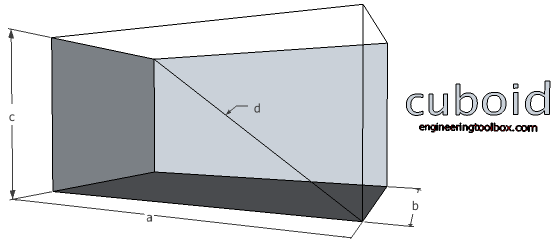
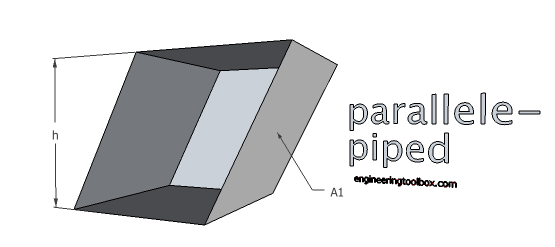


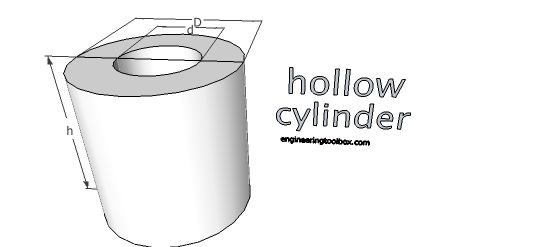

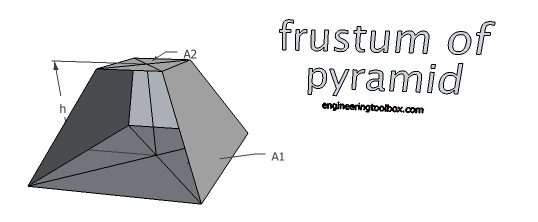

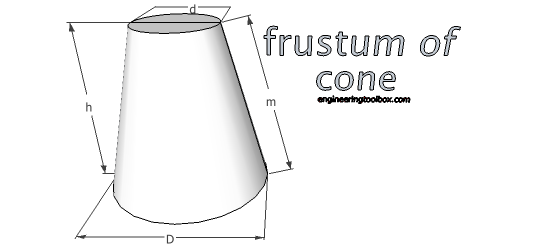


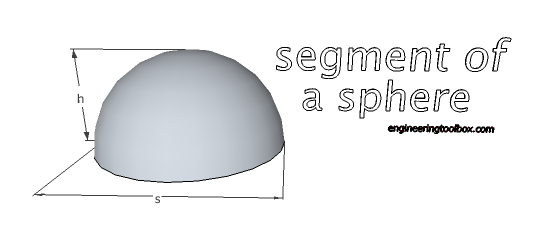
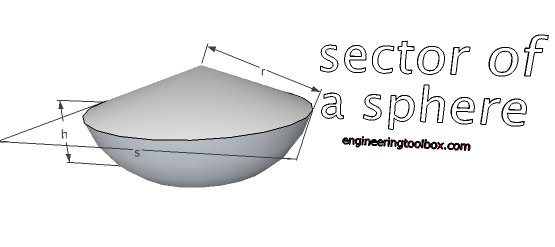



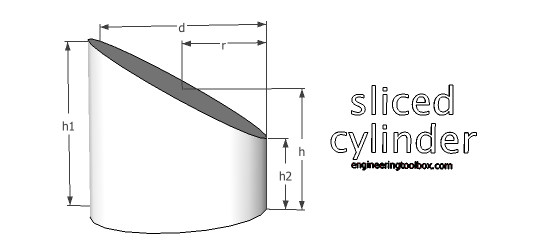
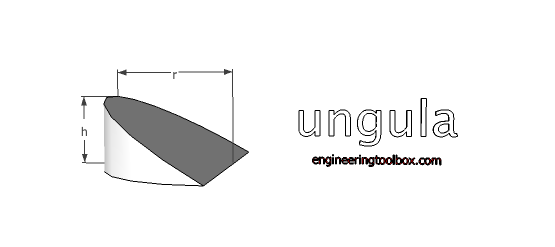


























6 comments: